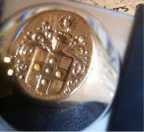Wednesday, June 29, 2011
Tuesday, June 28, 2011
the great american vacation, part 3
The satellite image above can be enlarged w/ a click. On the bottom right side is Badlands National Park. It looks like a landscape from another planet. On the left side is the Black Hills and the Mount Rushmore National Monument. These places are less than 2 hours apart by car and worlds apart in appearance.
Between the Badlands and Mount Rushmore are the towns of Wall and Keystone, South Dakota. Almost everything cheesy and patriotic and made in China is available in these tourist trap towns. The false front of western streetscapes in old movies is alive and well in here. Nothing is quite what it seems (but we all know better, don't we?). I make no claims to be above it all; I like t-shirts and the occasional shot glass and coffee cup.
It is an impressive site. My interest begins with watching re-runs of North by Northwest on TV as a kid. It is big and many people view it with a reverence that borders on the religious. Some say Van Morrison's Tupelo Honey refers to this.
Greenpeace activists used it to send a big message to Barack Obama a few years ago:
Between the Badlands and Mount Rushmore are the towns of Wall and Keystone, South Dakota. Almost everything cheesy and patriotic and made in China is available in these tourist trap towns. The false front of western streetscapes in old movies is alive and well in here. Nothing is quite what it seems (but we all know better, don't we?). I make no claims to be above it all; I like t-shirts and the occasional shot glass and coffee cup.
I did not take the images on the left (immediately above) but I wanted all to get a feel for downtown Wall, SD. What I find worth contemplating is the juxtaposition of the awesome natural wonders and the souvenir stands which are full of the familiar, at best. Is there a deeper reason then a remembrance for such disparate phenomena to exist side by side? Does the souvenir stand help us exit the realm of the awe-inspiring and return to civilization and its discontents?
Here is Keystone, SD:
Here is my postcard image of Rushmore:It is an impressive site. My interest begins with watching re-runs of North by Northwest on TV as a kid. It is big and many people view it with a reverence that borders on the religious. Some say Van Morrison's Tupelo Honey refers to this.
Greenpeace activists used it to send a big message to Barack Obama a few years ago:
The mountain pine beetle is having a devastating effect on the pines that look so dark from a distance that it gives the Black Hills their name:
Still, there is something about a double rainbow at the end of a long day on the road.
These days my roots seem deeper than my wings can spread - that is to say I don't travel quite as well as I used to back in the day. I still like to see new stuff and I still like to experience the visually familiar, like Rushmore, in person but it is bittersweet in so many ways.
The sweetness is about the grand, expansive nature of this country; we have before us what we need to thrive - will we do it? The bitter is seen in environmental damage, man-made devastation and a sense of falling below potential.
Sunday, June 26, 2011
the great american vacation, part2 - energy
Drive by shootings (photography on the fly) can capture the truly fleeting image, moment of light and image of interest that is not worth stopping for; a road trip would never end if every curiosity was honored with a stop. Energy makes this economy turn and we cannot escape its production while in the act of its consumption on the road. Click on any of the image to enlarge.
Thunder Basin is the largest strip mine in North America and the source for most of the coal burned in Missouri and many parts east of here. This is where the trains come from and to where they return. Ameren's Labadie Plant will burn up to 3 trainloads a day in July/August.
Just to the right of center can be seen the Callaway nuclear plant with a puff of white smoke. The cooling tower is over 550' tall.
Gasoline and wind turbines under a big sky
Just to the right of center can be seen the Callaway nuclear plant with a puff of white smoke. The cooling tower is over 550' tall.
Saturday, June 25, 2011
the great american vacation, part 1
Robert Frank marks the transitions of his great book, The Americans, with images of Old Glory. The flag pictured below is at the Golden Spike National Monument Site at Promontory Point, Utah. Here, the Transcontinental Railroad was completed in 1869. This marked our turn around point.
The best part was spending time with my son and daughter-in-law in Logan. What a big, wide, beautiful, and awe-inspiring country we live in. The juxtaposition of natural wonder, infrastructure and americana tells a great story.
We drove over 3,000 miles in a week. The image below depicts our turn by turn directions.
Wednesday, June 22, 2011
Wednesday, June 8, 2011
Special Presentation on June 23, 2011
The Architecture Section of the St. Louis Artists' Guild is proud to present:
Public Housing in St. Louis: Vanishing Mid-Century Modern Architecture
Architectural historians Michael Allen and Lynn Josse will provide an overview of the history and design of public housing in St. Louis city, from low-rise Carr Square Village in 1941 through the high-rise Arthur Blumeyer Homes in 1968. The talk will cover the contributions to local public housing architecture by major designers like Minoru Yamasaki, Gyo Obata, Joseph Murphy and others. With St. Louis' two public towers both slated for demolition in the next two years, the talk will devote special attention to the development of high-rise housing forms and features at the Cochran Gardens and Pruitt-Igoe projects. Remaining public housing buildings at Carr Square and Clinton-Peabody have been heavily altered, meaning that the last intact buildings soon will fade to memory.
The event will be at the Guild, #2 Oak Knoll Park in Clayton at 7PM on Thursday, June 23, 2011
Public Housing in St. Louis: Vanishing Mid-Century Modern Architecture
Architectural historians Michael Allen and Lynn Josse will provide an overview of the history and design of public housing in St. Louis city, from low-rise Carr Square Village in 1941 through the high-rise Arthur Blumeyer Homes in 1968. The talk will cover the contributions to local public housing architecture by major designers like Minoru Yamasaki, Gyo Obata, Joseph Murphy and others. With St. Louis' two public towers both slated for demolition in the next two years, the talk will devote special attention to the development of high-rise housing forms and features at the Cochran Gardens and Pruitt-Igoe projects. Remaining public housing buildings at Carr Square and Clinton-Peabody have been heavily altered, meaning that the last intact buildings soon will fade to memory.
The event will be at the Guild, #2 Oak Knoll Park in Clayton at 7PM on Thursday, June 23, 2011
Saturday, June 4, 2011
Faulkner's 'Rowan Oak' and My Southern Summers
I spent the summers of youth in the house shown above. This home is near downtown Helena, Arkansas. Helena is about 65 miles south of Memphis on the Mississippi and not too far from the famed 'crossroads' of the blues. Most of the music and the subtleties of delta culture were beyond the comprehension of the child I was.
The house above is William Faulkner's home in Oxford, Mississippi. That both these homes are Greek Revival is an interesting coincidence. As I entered adulthood and spent time reading Faulkner I associated the sights, sounds and smells of Helena and nearby Moon Lake with the feel and the descriptions Faulkner provided in his work. I have often thought of Faulkner as an explanation of the complexity behind the scenes of the summers I spent in the south. Whether or not this is true is hard to say - but it is not hard to say that the south has stayed with me in deep and profound ways and it remains a touchstone. When I go there I see how it has changed and how I have changed. Growth and aging, maturation, sweetening, mellowing and the remnants of what was. And hard life. This is not to say that I 'know' the south, only that is has been and remains an important part of my heritage.
Friday, June 3, 2011
A Church by Charles Eames
The cornerstone of St Mary's Church in Helena, Arkansas states '1935' as the year of erection. Helena is a sleepy delta town on the Mississippi about 65 miles south of Memphis. This project predates Eames' time at Cranbrook and the meeting of his future wife Ray.
The building is traditional in footprint with a transept and crossing. The steeple is of copper with an interesting net-like detailing. Click on the images to enlarge.
The building is traditional in footprint with a transept and crossing. The steeple is of copper with an interesting net-like detailing. Click on the images to enlarge.






























